Your landing page is important. Quite often it’s the page that most visitors come to first. It’s the page you may generate links to. It may also be the page that the search engines pay the most attention to. Therefore, it makes sense to make sure your landing page is as well designed as it can be.
There are seven key elements for a successful landing page. They each are important independently, but they work together to provide a unique and effective experience. Before you take a look at these key elements, however, it’s important to answer a question first.
What is the goal of your landing page?
Your landing page needs to have a goal – an objective. What do you want visitors to do? What action do you want them to take? There are many possibilities. You may want them to:
- Dig deeper and explore your website
- Click through to a sales page
- Opt-in
Once you know what you want visitors to do, then you can make sure your landing page supports that goal. Now you’ll use the seven key elements. They include:
#1 Images
The images you choose on your landing page are important. You want them to support the overall goal. Images, in the form of graphics and photos, can quickly overwhelm a landing page and become a distraction. If you choose to use images, and they really can enhance a landing page, make sure they support your goal. Make sure they adequately represent your brand, too. A common image to use might be your photo. This helps connect the reader to you. It helps brand your business and build a relationship.
#2 Headline
Your headline is often the very first thing a visitor will see. If it doesn’t grab their attention, then it’s not doing its job. However, in addition to grabbing their attention, it also must support your page’s purpose. Take time to craft a headline. This is also an important element to test and track. Create two landing pages with two different headlines. Determine which headline is better at helping you accomplish your goal for the page.
#3 Emotions
Emotions are what people use to make buying decisions. They’re incredibly important if you’re trying to motivate any action. You can tap into your visitors’ emotions with images and words.
#4 Navigation
Make sure that your visitor not only knows what they’re supposed to do on your landing page, but also that they can quickly figure out how to do it. If you want people to dig deeper into your website, then make sure your buttons and call to action support that. If they cannot figure out how to get to a page that interests them, they’re going to leave.
#5 Proof
You might notice that many of the elements of a successful landing page are also sales copy elements. This is because you are trying to motivate an action. Your landing page has a purpose. Proof can be demonstrated by:
- Awards
- Testimonials
- Endorsements
- Organization membership
- Facts and statistics
The proof you use depends on your goal. For example, if you want to motivate an opt-in, then you might use facts and statistics along with a banner ad highlighting an award your site has won. This gives you credibility.
#6 Call to action
A call to action is required for every successful landing page. It’s the only way your readers know what they’re supposed to do next. Test it and track it for success.
#7 Opt-in form
Finally, if your goal is to motivate an opt-in, then you must have an opt-in form on your landing page. In fact, everything on that page needs to support that goal.
Your landing page is perhaps the most important page on your website. Make sure the elements on your page support your goals and your success. Test and track various elements until you get the best results.

